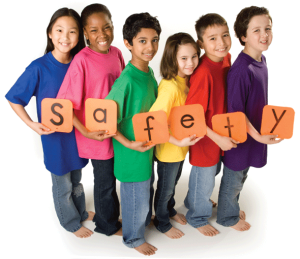The brown recluse spider is not an aggressive species but it has a potent venom capable of triggering serious health issues among humans. Children who often stay in areas where these spiders are present are at high risk for sustaining a bite.
The brown recluse spider bites can cause the skin and underlying flesh to die which leads to a necrotic wound that might take weeks to fully heal and can leave behind significant scarring and even increase the risk for death among young children.
These spiders have a characteristic violin-shaped marking on its back which is why it is also known as the fiddle-back spider. It usually hides in dark and secluded areas while waiting for prey, usually around yards and houses. Even though not aggressive, the spider can bite if threatened. Most cases of bites occur when the spider is unintentionally pressed against the skin.
What are the potential risks?
Children who play outdoors are at high risk than adults to end up with a brown recluse spider bite. Cases of death associated to the bite of this spider are uncommon, but children face a higher risk for fatality than adults.

In most circumstances, the bites can result to the formation of a deep necrotic wound that takes a long time to fully heal.
Indications of a brown recluse spider bite
In most cases of bites from brown recluse spiders, it can be inconspicuous that the child will not even notice it. After a while, the child can complain of a stinging sensation and later followed by significant pain.
During the initial 24 hours, the bite site changes from a small-sized, white blister to an elevated, ulcerated sore that is hard when touched. It is important to note that the appearance is dry with a bluish middle that is bordered by a white ring and irregular red perimeter. As the damage progresses, the wound can grow between 1-6 inches in size. The dead tissue eventually sloughs off from the lesion which reveals the underlying tissue.
Immediate first aid
If a child is suspected with a bite from a brown recluse spider bite, a doctor should be consulted right away. If possible, seize the spider and securely store it in a container and bring it to the doctor.
Cleanse the bite site using water and soap. After cleaning the area, apply an antibacterial spray and an ice pack to reduce the circulation, pain and swelling. If the bite is located in the leg or arm, it should be elevated and secure a bandage around it above the site to limit the flow of blood. Just make sure that it is not too tight that the circulation is disrupted.
Medical care
Even today, there is no available antivenin for brown recluse spider bites. Once a child is over 2 years old, he/she can be given a non-steroidal anti-inflammatory drug (NSAID) such as acetaminophen or ibuprofen for the pain.
Some doctors decide to administer large doses of cortisone-like hormones to minimize the risk for systemic reactions. In some cases, ongoing surgeries might be required to remove the dead tissue from the wound to promote the healing process.

